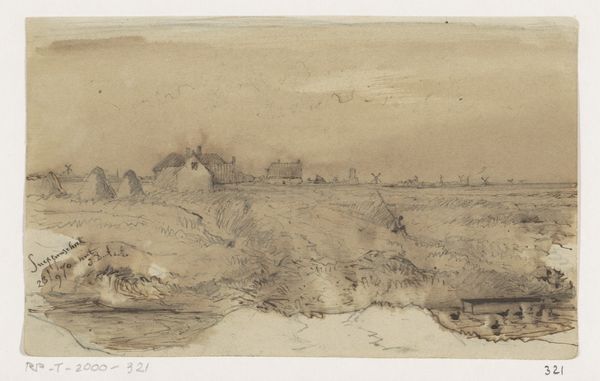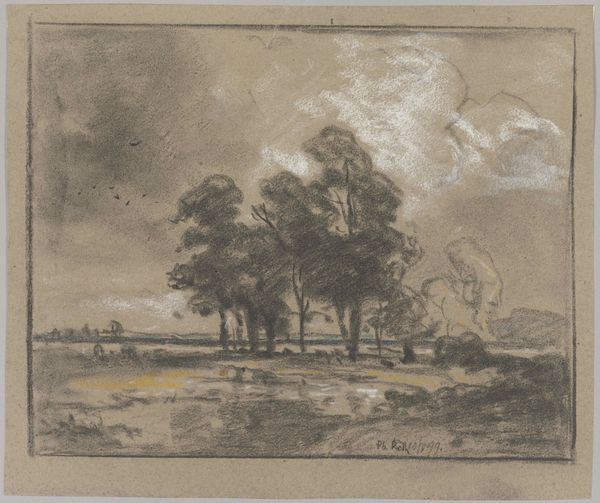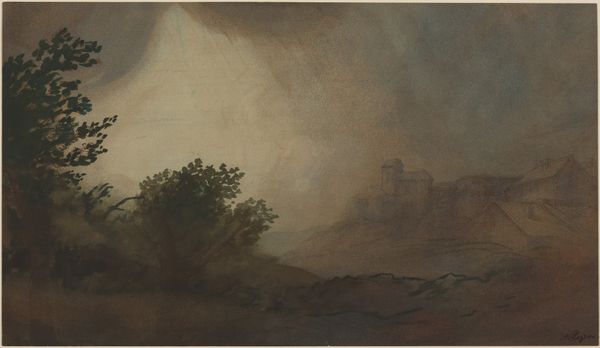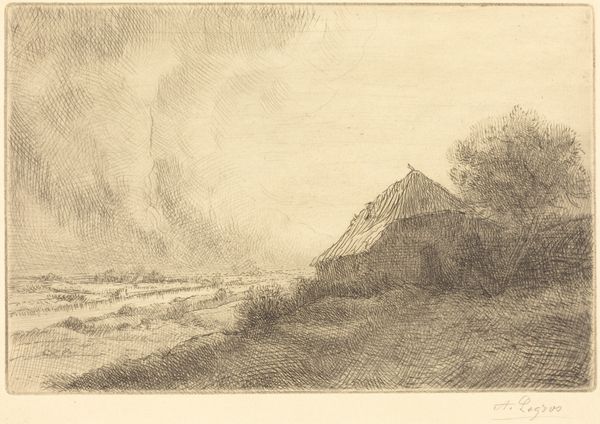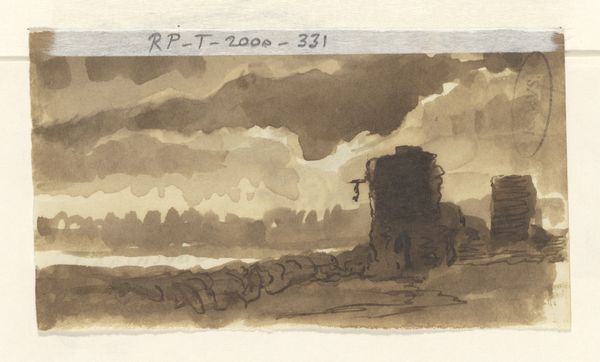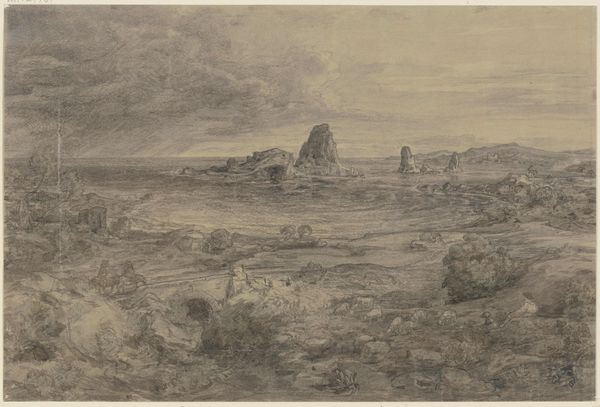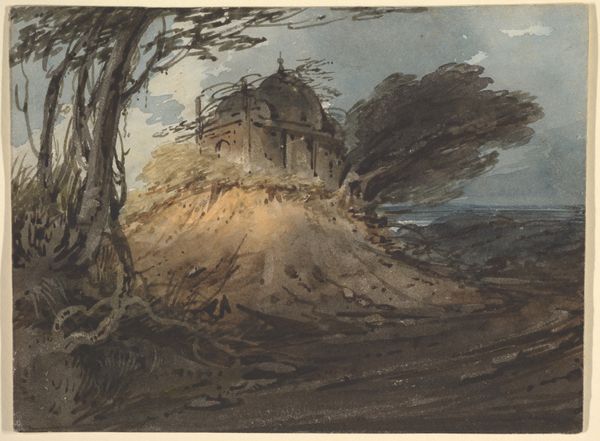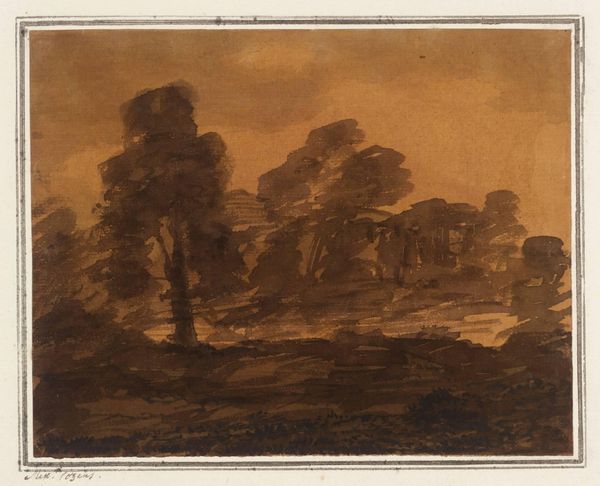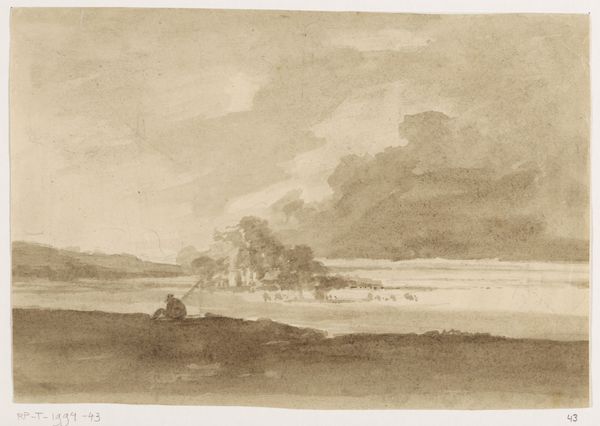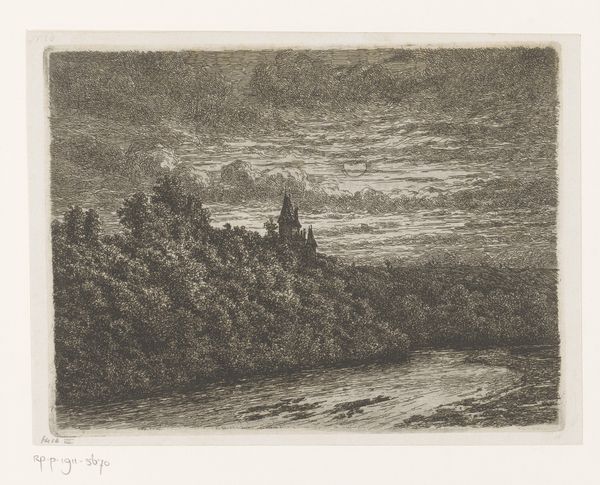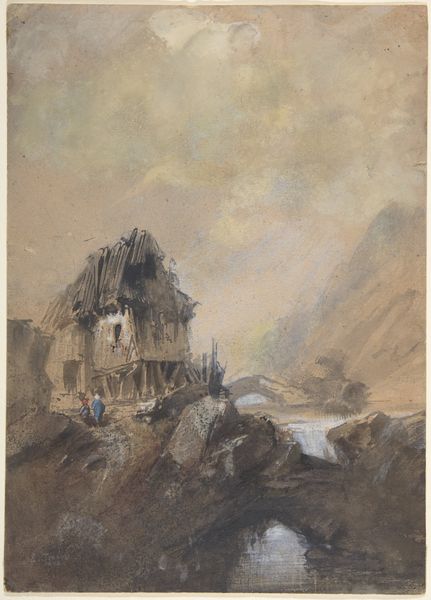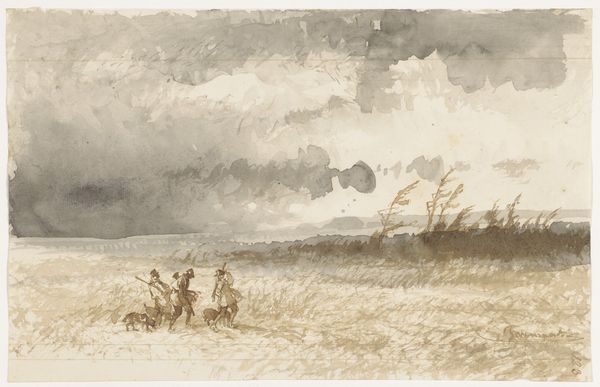
drawing, charcoal
#
drawing
#
landscape
#
charcoal drawing
#
romanticism
#
charcoal
Dimensions: height 93 mm, width 193 mm
Copyright: Rijks Museum: Open Domain
Editor: So, this is "Daglonershuizen," from 1846, a charcoal drawing by Johannes Tavenraat, currently housed at the Rijksmuseum. It strikes me as incredibly bleak. What can you tell me about it? Curator: Bleak indeed. Let's consider the materiality of charcoal itself. Its creation relies on the burning of wood, a process of transformation and reduction. Doesn’t this reflect the conditions of the “dagloners,” the day laborers, depicted? What sort of labor is suggested, and how does Tavenraat make this visible? Editor: I see smoke coming from what look like the laborer’s homes. It seems like the homes are stacked on top of each other in an unusual fashion. The work of the occupants is possibly something with fire? The social implications would be the limited materials for them to use. Curator: Precisely. Notice the dwellings' crude construction, the use of basic materials, and their integration into the landscape. Consider how this piece reflects the shift from rural economies and the implications on those relegated to this sort of life. Does the smoke rising suggest the futility of endless labor? Editor: It gives the impression of a cycle. Resources go to labor, labor creates more of what already exists, such as homes on top of one another. Curator: Yes! We might think of Tavenraat's choice of charcoal as an economic statement – a readily available, inexpensive medium that mirrors the lives of those he portrays. The social statement, thus, becomes deeply ingrained in the materials themselves. It becomes apparent when contrasted with formal landscape painting styles of the time. Editor: So, it’s less about the romantic landscape, and more about the backbreaking process of everyday life that this landscape bears witness to? Curator: Exactly. Tavenraat uses materiality and technique to elevate the story of the laborers, making the social circumstances as material as the drawing itself. I find it interesting that we learn so much from such an ordinary scene. Editor: Thanks, that’s a new lens for how to look at landscapes. I'm now more conscious of the production of the work!
Comments
No comments
Be the first to comment and join the conversation on the ultimate creative platform.
